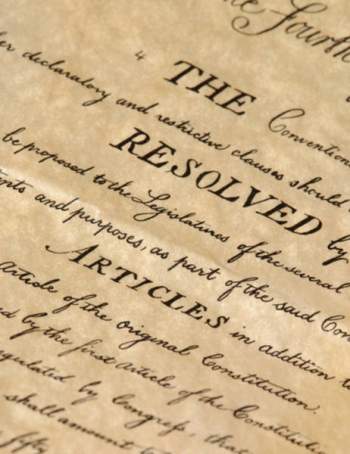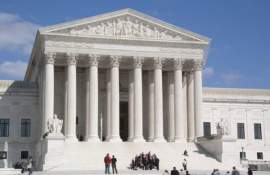
Article 2

What is Article 2 of the Constitution?
Article 2 of the United States Constitution is the section that makes the executive branch of the government. The Executive branch of the government is the branch that has the responsibility and authority for the administration throughout the day of the state. In the United States, the executive branch includes the President, and other executive officers like state governors.
How is Article 2 Broken Down?
Article 2 of the United States Constitution is broken down into four main sections. These sections are further broken down even more into clauses.
Section 1 of Article 2 of the Constitution
Section 1 has 8 different clauses that all describe the rights and role of the President and Vice President of the country.
Clause 1: This is the vesting clause which says that the President of the United States has the executive power and will hold his or her office for a four year term along with a vice president for the same term.
Clause 2: Both the president and the vice president are chosen by the electors, who are usually picked by the state legislatures. Each state can choose as many electors as it has senators and representatives for that state.
Clause 3: Once the electors are chosen, they will meet in their state to vote on who shall be President and Vice President. Originally, the person with the most votes would become President while the second highest would become Vice President. However, after the passing of the 12th Amendment, Electors would vote once for a President and once for a Vice President.
Clause 4: Congress has the power to decide when Election Day will be held. Currently, the states choose their electors on the Tuesday after November's first Monday. The electors then vote on the second Wednesday of December.
Clause 5: In order for an individual to be qualified to be President or Vice President, he or she must be a natural born citizen, at least 35 years old, and must have lived in the United Starts for 14 years.
Clause 6: If the President resigns, dies, is removed from office, or is not able to act out his duties, the Vice President will be responsible for replacing the President. If the Vice President is unable to continue his office, Congress must choose a suitable offer to replace him or her until the next election.
Clause 7: The President's salary cannot change during his term. He also cannot get money from any other state or federal government.
Clause 8: The President must take an oath before entering his office
Section 2 of Article 2 of the Constitution
Section 2 has three different clauses that talk about the powers given to the President.
Clause 1: The President of the United States is the commander-in-chief of the military. This clause also creates a Cabinet of senior executive officers who assist the President in his duties.
Clause 2: This clause is called the Advice and Consent clause, which means that the President can use his powers only by getting help and approval of the United States Congress.
Clause 3: The President has the power to appoint officers during recesses of the court, but these appointments expire once the next session of the Senate begins.
Section 3 of Article 2 of the Constitution
Section 3 has five different clauses that talk about the responsibilities of the President.
Clause 1: The President has to give Congress information occasionally through a State of the Union address.
Clause 2: The President can call for sessions of the House of Representative, the Senate, or both.
Clause 3: The President will receive all foreign ambassadors.
Clause 4: The President must work to ensure that all laws are faithfully executed.
Clause 5: The President has the power to commission the officers of the United States, including those in the military or the foreign service.
Section 4 of Article 2 of the Constitution
Section 4 is the last section of Article 2. This section talks about impeachment of the President, Vice President, or any civil officers like Cabinet Secretaries or judges.
NEXT: Article 3





















